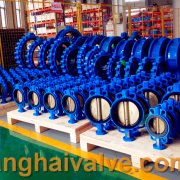Difference Between Low Temperature Valves and Normal Temperature Valves in Marine Applications
In marine valve applications, low temperature valves and normal temperature valves are designed for different working conditions. Their main differences are as follows:
- Operating Temperature Range
normal temperature valves are designed for media with temperatures ≥ -29°C (e.g. seawater, freshwater, fuel oil, compressed air).
Low temperature valves are designed for extremely low temperatures ≤ -29°C, such as -46°C, -101°C, -196°C, used for LNG, LPG, liquid nitrogen, etc.
- Material Selection
normal temperature valves use conventional materials like carbon steel (WCB), stainless steel (CF8/CF8M), or bronze.
Low temperature valves require special low-temperature-toughness materials, such as:
Low-temperature carbon steel (LCB, LC2)
9% Nickel steel
Austenitic stainless steel (304, 316L)
Aluminum alloy, Monel alloy
These materials maintain ductility and toughness at Low termperature temperatures, preventing brittle failure.
- Structural Design
Normal temperature valves have standard designs without special considerations for thermal contraction.
Low temperature valves incorporate:
Extended bonnet (to keep packing away from the cold zone)
Special low-friction sealing materials suitable for low temperatures
Designs that minimize leakage and avoid jamming due to thermal contraction
- Testing Requirements
Normal temperature valves are tested according to standard marine class rules (e.g. API, ISO, CCS, LR).
Low temperature valves undergo additional tests, such as:
Impact test at Low temperature temperature
Low-temperature sealing and functional tests
- Typical Applications
| Item | Normal temperature Valves | Low temperature Valves |
| Medium | Seawater, freshwater, fuel oil, air | LNG, LPG, liquid nitrogen |
| Temperature | ≥ -29°C | ≤ -29°C |
| Typical Use | General ship piping systems | LNG carriers, LPG carriers, Low temperature storage |
Low temperature valves are specifically engineered for ultra-low temperature service, with materials, design, and testing tailored to prevent cold brittleness and leakage. normal temperature valves are not suitable for Low temperature applications.

 tanghaivalve.com
tanghaivalve.com

 © Copyright 2020 Tianjin Tanghaidongyang Valve Co., Ltd. All Rights Reserved.
© Copyright 2020 Tianjin Tanghaidongyang Valve Co., Ltd. All Rights Reserved.